#loch nan uamh
Explore tagged Tumblr posts
Text

[Please click on the image to see it at a reasonable size.]
Algy fluttered over the deep chasm to the highest point on the headland, just a few metres away, and gazed in awe at the panorama around him, which was so extensive that he could only see a small part of it at a time.
But a very special view lay to the north-east, for looking out in this direction Algy could not only see a wide expanse of the Sea of the Hebrides but some decisive moments in Scottish history.
Algy wondered which birds might have perched in this very spot in the years 1745 and 1746, for what they would have seen changed Scotland for centuries to come, right up until the present day. Did they see that wee boat, over there in the distance, which brought Bonnie Prince Charlie and his followers on the final stage of their journey to Scotland from France in the summer of 1745? Algy could see a boat over there now, but he thought that it was probably not the same one…
Did his fluffy ancestral cousins fly that short distance over the water to watch the young prince make his way up to Glenfinnan at the head of Loch Shiel to rally the clans (a spot now famous for a much less significant reason)? It was a route well known to Algy…

And did they, a year later, see the prince and his men, fleeing from the battlefield of Culloden and the English army, set out again from Loch nan Uamh, just over there where the mainland meets the sea? And not once, but twice: first to escape pursuit in the outer islands, and then finally, in the early hours of September 20, 1746, to sail away to France, never to return…?
And did those birds add their cries to the laments of the folk left behind to face the wrath and terror of Cumberland's army? What stories those birds could tell if only Algy could meet them now…
Here is one of those laments, which remains ever popular, performed by some young Canadian musicians including a singer with a beautiful voice.❣️ The landscape is all wrong, but the song is all right ☺️
youtube
[Will ye no come back again was written by the late 18th/early 19th Scottish songwriter Carolina Oliphant, Lady Nairne.]
#Algy#photographers on tumblr#writers on tumblr#Scotland#Scottish landscape#Scottish panorama#Scottish history#will ye no come back again#carolina lady nairne#jacobite rebellion#scottish independence#bonnie prince charlie#loch nan uamh#sea of the hebrides#1745#1746#Maria Jimenez#Gabrielle and Noël Campbell#jacobites#jacobite rising#the 45#isle of eigg#isle of rum#adventures of algy#original content#jenny chapman
42 notes
·
View notes
Text


September 20th 1746 saw Prince Charles Edward Stuart finally escape capture by sailing to France aboard the French ship "L'Heureux."
In the aftermath of Culloden, Prince Charlie spent several months on the run hunted by troops on the ground and the Royal Navy at sea.
HMS Furnace - captained by Aberdeenshire naval officer John Ferguson - and HMS Terror were among the warships in pursuit of the prince. When the navy ships anchored close to shore, nearby homes of suspected Jacobite supporters were burned down by sailors and marines.
One of the strangest incidents saw the warships arrive at the remote archipelago of St Kilda.
The islanders ran from their homes and hid in the hills.
When the government soldiers finally tracked them down, they quickly realised that the islanders had never heard of the prince, and that he was not hiding on the islands.
The Young Prince flitted between the west Highlands mainland, Skye and the Outer Hebrides.
Most famously, he was taken to Portree on Skye by Flora MacDonald while disguised in women's clothing and pretending to be an Irish maiden by the name of Betty Burke.
MacDonald was later arrested and sent to the Tower of London.
Eventually, at Loch nan Uamh near Arisaig, two French vessels L'Heureux and Le Prince Conti and their crews reached Prince Charlie and he was taken to France.
17 notes
·
View notes
Text




Scotland (2) (3) (4) by Jurgen L
Via Flickr:
(2) Loch nan Uamh Viaduct, the viaduct carrying The Jacobite. Photographed near from The Prince's Cairn. (3) Kalnakill near Applecross sands. (4) Castle Sinclare Girnigoe.
1 note
·
View note
Text
Day Forty-eight


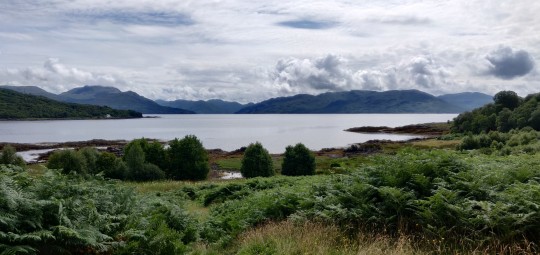
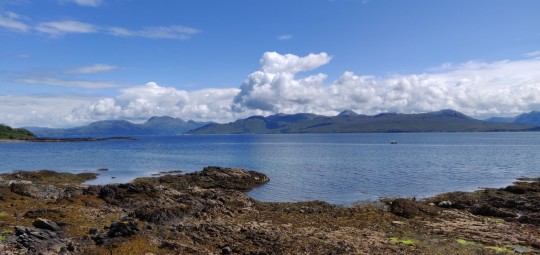





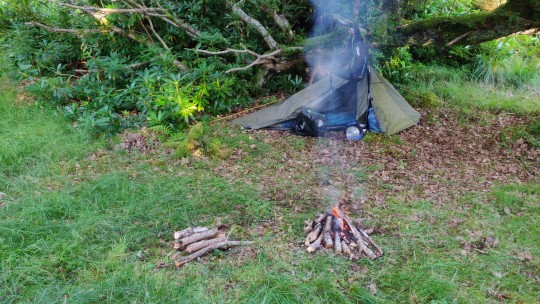
Up and at 'em just outside Kyke of Lochalsh, today starts off extricating myself from the forested cliffsides and a short cruise down to the village proper to make use of the facilities.
Once set, it's time to begin proper! A short bit of island hopping westward along the road brings us to the impressively arching Skye Bridge, which gives a lovely view over Loch Alsh.
Over the bridge and I now hit the Isle of Skye!
Whilst the initial road on to the island is a bit of a busy A road, the road is lined with trees and the air is filled with a pleasant smell of both sea salt and pine as the journey carries on past the shore, with Skye's mountains touching the clouds ahead.
Past Breakish there's a left turn and on to a less busy A road that heads south around the foothills here and begins a nice ride past Loch Hourn, with the mainland's craggy mountains making a pleasing backdrop.
There are a few hardwr ascents along the road here, but I'm in no big rush today so they are gradually chewed through as the road passes by various holiday homes and villages along the coastline.
A bit more riding and it gets to lunchtime by the time I hit Armadale, and I have some time to kill so allow myself a nice long lunch.
The day had started off a bit damp but the sun has come out fully now, with the sunlight shining off the sea.
As there is no through road on the mainland around this stretch of coast, and the only other route being a 100 mile diversion inland past Fort Augustus, I've journeyed onto Skye to get the ferry from Armadale across to Mallaig, and after a nice 30 minute cruise across the water it's back to the mainland coast once more.
Out of Mallaig port, it's a long stretch of A road but I'm pleasantly surprised by it having long stretches of separate cycllying infrastructure, which allows me to make some good headway up the tougher hills here as the road climbs up once more.
Around Loch Nan Uamh there are a number of military jets on maneuvers and the hills echo with the thinder of their engines.
A bit more climbing and we get a beautiful view across the water of Arnavol Viaduct at the end up the loch.
The road carries on around and under the viaduct, where another few stiff climbs are thrown in.
I'm tiring at this point with evening setting in, and spy a nice bit of flat ground through some of the trees ao decide to setup camp a little shy of Lochailort. Whilst the plentiful deadwood around is rather damp, I'm in the mood for a little fire, so employ a bit of bushcraftiness to get the damp wood going.
A pleasant end to the day! See you all tomorrow.
1 note
·
View note
Photo

Loch nan Uamh and viaduct, West Highlands
#Europe#Britain#Scotland#highlands#West Highlands#Lochaber#moidart#loch nan uamh#viaduct#sea#mountains
9 notes
·
View notes
Photo

Finding the prime camping spot at Loch nan Uamh, Scotland
2 notes
·
View notes
Note
13, 24, 24 (have fun!!)
13. [share some random historical trivia!]
bees!! bees are really cool. harvesting honey from wild beehives goes back at least 7000-9000 years (maybe longer - that's just when we start getting evidence for it via cave paintings and traces of beeswax on pottery), but 'true' beekeeping (providing an artificial space for the bees to live in) starts around 2500 BCE (in a european/north african context, anyway - I don't know about the rest of the world!

^ I believe this is from the tomb of pabasa, around the 7th-6th century BCE
ancient greece and pre-roman italy have a lot of evidence for beekeeping. northern italy in particular. and the really interesting thing is that there's an etruscan trade centre called forcello with a burnt-out workshop, and the fire preserved bee breads (stored pollen basically). when those bee breads were analysed, it showed a marked preference by the bees for aquatic plants. which is SUPER unusual!! but it's probably evidence of itinerant beekeeping. the hives would have been made of something like wicker, and loaded onto boats, which would take them through littoral environments. the bees would collect the pollen, return to the hive, and then the hives would go back to the workshop so people could extract the honey and wax. and I just find that so delightful!! imagine if your job was to take bees out on daytrips
24. Who do you consider to be one of the most underrated historical figures?
[not sure if you meant to ask a different question or wanted me to answer this one twice ajghkfdgdf. I will answer it twice]
first of all, alasdair mac mhaighstir alasdair/alexander macdonald. who was a super prolific jacobite poet. he had worked with the sspck (a religious body that wanted to educate and 'civilise' the highlands/make english the primary language), and produced a gaelic-english dictionary for them, but he ended up abandoning the school he worked at and was dismissed in july 1745. later that month he goes to loch nan uamh, where prince charles has landed, and is one of the first people to board the boat. prince charles is not really broadcasting his identity at this point, and alasdair 'conversed with him in a very familiar way' and had to be told to chill and not be so overly friendly ajkhgfjdg.
he's interesting because he composed in gaelic, and much of his work is very gaelic in format and nature, but he'd also been educated at glasgow university, so he brings in a bunch of different elements like classical mythology. which makes him a very non-standard source for how your average highland jacobite would have conceived of the whole political situation/interacted with jacobite imagery, but as an individual there's a lot to dig into! on the flip side, he has a poem (ostensibly non-jacobite) where he complains about prostitutes, and it's super misogynistic and not at all a comfortable read - but there's one line where it kind of sounds like he's offended that they would dare to speak prince charles' name. and I'm fascinated by that line because we know there were prostitutes travelling with the jacobite army in the '45 - it was just a common army thing in that period, and there's a record of some of them drowning during a river crossing - but we don't really know anything about /them/. they're prostitutes, they're poor women, their thoughts and opinions don't get recorded. so to have that little snapshot, that little hint that yeah, of course they were involving themselves in jacobite discourse as well - it's possibly kind of unique.
the second person I'll go for is charlotte robertson, lady lude. who was another jacobite, and pretty notorious for the way she forced her tenants out to fight. the hanoverian propaganda machine at the time painted her as young, seductive, and having an affair with prince charles - but in reality she was much older, and there's no real evidence they ever had a sexual/romantic relationship. hanoverian propaganda was just super focused on the number of women supporting the jacobite cause as a way of painting it as unnatural. what we do know is that lady lude set herself up as the lady of a relative's house (the caretaker of the house was. not very happy about this ajhkdgfd) and threw prince charles a party, where she was VERY excited to present him with a pineapple to eat, as he'd never had one before. in thanks for the party, he gave her a snuff mull (a small box for storing snuff - they're sometimes considered to only have been used by men, but women did own them too, sometimes for snuff but more often for storing pins, makeup, etc) which had supposedly been in the stuart family for a few generations. and you can go and see it!! it's at the mcmanus museum in dundee (very nice museum & they were very kind and sent me an old article they had about it so I could use it in my honours thesis. shoutout to the mcmanus)
history asks!!
#replies#kiraistired#me reblogging this ask game: this will be great i know things about history : )#me actually reading the questions people have sent: i have never known anything about history. ever.
4 notes
·
View notes
Text
Initiating CAERoS: Coastal Archaeology and Erosion in Wester Ross
Initiating CAERoS: Coastal Archaeology and Erosion in Wester Ross

by Stephanie Piper, Newcastle University ([email protected])
In April 2019 myself, two Master’s students from Newcastle University – Callum Hardman and Holly Holmes, and Paco Martínez-Sevilla, a colleague from Durham University, based ourselves in Poolewe to begin a week-long walk-over survey of the coastline around Loch Ewe. The aims of the survey were to:
Establish the potential…
View On WordPress
#An Sean Inbhir#anti-aircraft battery#Camustrolvaig#coastal erosion#coastal Mesolithic occupation#Cove battery#Creag nan Uamh#eroding coastlines#Late Glacial Maximum#Loch Thurnaig#Ob Na Ba Rubha#raised beach#Red Smiddy ironworks#roundhouse#SCHARP#Scotland’s Coastal Heritage at Risk project#Scotland’s First Settlers#ShoreUpdate App#Uamh Mhor#Uamh Nan Deargann#USS William H. Welch#world war two archaeology
0 notes
Text
Trove of Musket Balls Sent to Aid Bonnie Prince Charlie's Jacobite Rebellion Found
https://sciencespies.com/history/trove-of-musket-balls-sent-to-aid-bonnie-prince-charlies-jacobite-rebellion-found/
Trove of Musket Balls Sent to Aid Bonnie Prince Charlie's Jacobite Rebellion Found
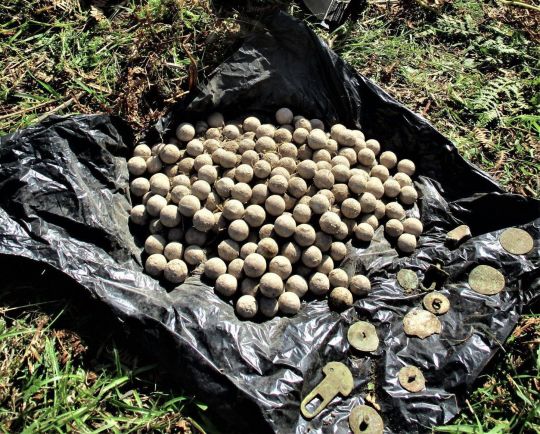
Amateur archaeologists in Scotland have discovered a cache of musket balls and other artifacts connected to the Jacobite Rising of 1745, which attempted to restore the Stuart dynasty to the United Kingdom’s throne, the Oban Times reports.
Paul Macdonald, Gary Burton and Gary McGovern—all members of the Conflicts of Interest battlefield archaeology group—were surveying a field in the Scottish Highlands this September when they found what appeared to be part of a shipment from France to the Jacobite rebels.
As Macdonald writes in a Facebook post, the trove—which included 215 musket balls, coins, and gold and gilt buttons—was buried near the ruins of a croft house on the shore of Loch nan Uamh. The property once belonged to Alasdair MacMhaighstir Alasdair, Gaelic tutor to Charles Edward Stuart, better known as Bonnie Prince Charlie, or the Young Pretender.
“We knew there were arms landed in the area and it then became a matter of narrowing down where they might be,” Macdonald tells BBC News.
Charles was the grandson of James II, king of England, Scotland and Ireland. A Catholic ruler, James was exiled after the Glorious Revolution of 1688, which found his Protestant daughter Mary and her husband, William of Orange, assuming control of the crown. The Stuart dynasty ended in 1714 with the death of Mary’s sister and successor, Queen Anne.
In July 1745, Charles traveled to Scotland in an attempt to take back the throne. Arriving with only about a dozen troops, he soon managed to raise an army of thousands, mainly made up of Highlanders. Though the Jacobites won a number of early victories, they were ultimately defeated by much larger English opposition forces. The uprising drew to a decisive close with a loss at the Battle of Culloden on April 16, 1746.
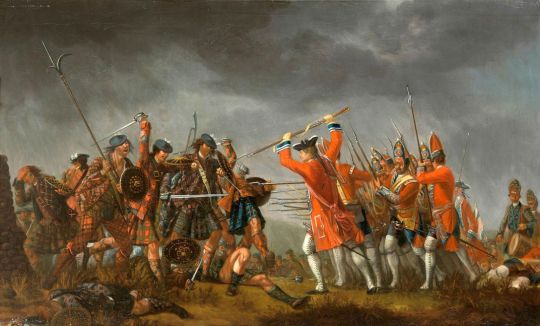
The British roundly defeated Bonnie Prince Charlie’s army at the Battle of Culloden.
(Public domain via Wikimedia Commons)
As Hamish MacPherson notes for the National, the English Duke of Cumberland’s army killed 1,500 to 2,000 Jacobite soldiers at Culloden Moor. Macdonald says the shipment his group discovered arrived two weeks after the uprising’s forces were defeated—too late to be of use.
Prior to the Battle of Culloden, France had also sent money to support the Jacobites’ efforts—but these funds were intercepted by Royal Navy ships, according to Jacqueline Riding of History Extra.
“This discovery truly is a remarkable find and confirms that Louis XV was trying to assist the Jacobites,” MacPherson writes. “And no wonder as King George [II] had sent British troops to join the armies against France and her allies in the War of the Austrian Succession.”
Per the Scotsman’s Alison Campsie, Charles wandered the Highlands and islands for five months after his defeat. He then left Scotland, departing from Loch nan Uamh and heading back to France. Following the revolt’s failure, the British government implemented harsh policies aimed at dismantling the Highlands’ clan system and eliminating the Jacobite cause once and for all.
“From what the finds tell us to date, the musket balls were cast for use, yet never fired and correspond with the same caliber of musket balls landed nearby with French arms for the Jacobite Rising by the ships Mars and Bellone on the 30th April 1746,” Macdonald writes on Facebook. “The arms were, of course, landed a couple of weeks after the Battle of Culloden and never saw service, but were rapidly distributed and hidden locally.”
BBC News reports that the new find has been reported to Scotland’s Treasure Trove, which works to protect archaeological discoveries.
Like this article? SIGN UP for our newsletter
#History
1 note
·
View note
Photo

Jacobite Express crosses the Loch nan Uamh Viaduct
51 notes
·
View notes
Text
Loch nan Uamh
Speed, bonnie boat, like a bird on the wing, Onward! the sailors cry; Carry the lad that's born to be King Over the sea to Skye.
On this day, 16 April in 1746 on a bleak desolate moor, about 6km east of Inverness, a battle took place which, although lasting only 40 minutes, remains an emotive event in Scottish memory, and changed the country forever by securing the Union with the United Kingdom. It could be said to have lead to a change in the balance of power in Europe and influenced Britain’s imperial expansion.
The…
View On WordPress
0 notes
Video
Prince's Islands Swim Swim round the islands off the Prince's Cairn in Loch nan Uamh off the Road to the Isles, Scotland. Route:
0 notes
Text
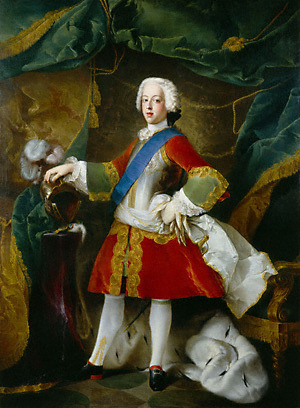
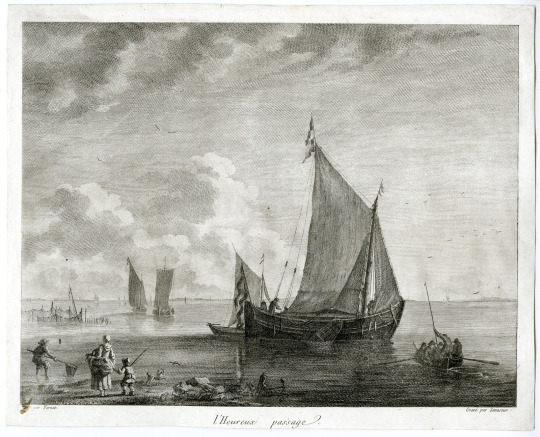

September 20th 1746 saw Prince Charles Edward Stuart finally escape capture by sailing to France aboard the French ship "L'Heureux."
In the aftermath of Culloden, Prince Charlie spent several months on the run hunted by troops on the ground and the Royal Navy at sea.
HMS Furnace - captained by Aberdeenshire naval officer John Ferguson - and HMS Terror were among the warships in pursuit of the prince. When the navy ships anchored close to shore, nearby homes of suspected Jacobite supporters were burned down by sailors and marines.
One of the strangest incidents saw the warships arrive at the remote archipelago of St Kilda.
The islanders ran from their homes and hid in the hills.
When the government soldiers finally tracked them down, they quickly realised that the islanders had never heard of the prince, and that he was not hiding on the islands.
The Young Pretender flitted between the west Highlands mainland, Skye and the Outer Hebrides.
Most famously, he was taken to Portree on Skye by Flora MacDonald while disguised in women's clothing and pretending to be an Irish maiden by the name of Betty Burke.
MacDonald was later arrested and sent to the Tower of London.
Eventually, at Loch nan Uamh near Arisaig, two French vessels L'Heureux and Le Prince Conti and their crews reached Prince Charlie and he was taken to France.
13 notes
·
View notes
Text
16 Simple (But Important) Things To Remember About Find Landscape Design | find landscape design
16 Simple (But Important) Things To Remember About Find Landscape Design | find landscape design – find landscape design | Encouraged in order to our blog site, within this time period I am going to demonstrate with regards to keyword. And now, this is actually the very first photograph:
Inspirations: Find Your Best Style Of Succulent … – find landscape design | find landscape design
What about image preceding? is usually which amazing???. if you believe consequently, I’l d explain to you some graphic once again beneath:
So, if you wish to obtain these great pictures about (16 Simple (But Important) Things To Remember About Find Landscape Design | find landscape design), simply click save icon to save the pics for your laptop. They’re all set for transfer, if you like and wish to get it, simply click save logo in the web page, and it’ll be directly down loaded in your laptop computer.} At last if you need to obtain new and the latest image related to (16 Simple (But Important) Things To Remember About Find Landscape Design | find landscape design), please follow us on google plus or bookmark this blog, we try our best to give you regular update with all new and fresh photos. We do hope you like staying here. For most upgrades and recent information about (16 Simple (But Important) Things To Remember About Find Landscape Design | find landscape design) images, please kindly follow us on tweets, path, Instagram and google plus, or you mark this page on book mark section, We attempt to present you up grade periodically with all new and fresh photos, love your browsing, and find the ideal for you.
Thanks for visiting our website, articleabove (16 Simple (But Important) Things To Remember About Find Landscape Design | find landscape design) published . At this time we’re delighted to announce we have found an incrediblyinteresting topicto be pointed out, namely (16 Simple (But Important) Things To Remember About Find Landscape Design | find landscape design) Many individuals trying to find info about(16 Simple (But Important) Things To Remember About Find Landscape Design | find landscape design) and of course one of these is you, is not it?
J R J Landscape Design, LLC – find landscape design | find landscape design
How To Find A Landscape Designer: Landscape Designer Facts And … – find landscape design | find landscape design
Top 16+ Landscaping Ideas for Front Yards and Backyards … – find landscape design | find landscape design
Loch nan Uamh Viaduct, Highlands, Scotland, UK 11.09.17 (SCOT 10) https://ift.tt/2ylW8Pw – find landscape design | find landscape design
Landscape Planning Software Free. Beautiful Gardening … – find landscape design | find landscape design
Landscaping Near Me – Find Qualified Landscapers Near Me – find landscape design | find landscape design
Landscape Design, find out the latest trends for 16 – find landscape design | find landscape design
Penang Landscaper and Unique Landscape Design – Garden Items … – find landscape design | find landscape design
landscape design near me – brushitoff.info – find landscape design | find landscape design
Northwest Home Landscaping, 16rd Edition: Including Western British … – find landscape design | find landscape design
Small Garden Ideas Design Google Search Landscaping … – find landscape design | find landscape design
The Elements of Great Landscape Design – find landscape design | find landscape design
Landscape design ideas for small gardens | Back yard … – find landscape design | find landscape design
Find This Pin And More On Landscaping Ideas Front Yard … – find landscape design | find landscape design
Garden design: planning your garden / RHS Gardening – find landscape design | find landscape design
from WordPress https://landscapeusa.club/16-simple-but-important-things-to-remember-about-find-landscape-design-find-landscape-design/
0 notes
Link
Standing on the shores of Loch nan Uamh I was feeling distracted. There was a lot to attend to. Behind me was a flat strip of grass, growing on a beach deposit now left high and dry by the crusts slow straightening of its spine after the weight of a huge ice cap melted away. Perched above the fossil beach was a Victorian country house where incredibly brave people from across Europe had trained before being dropped into Nazi-occupied Europe to wreak righteous havoc. To my left sits an Iron age h...
0 notes
Video
Arisaig, Scotland, Sunnyside Croft, Aerial Video Works - DJI Phantom 4 from Aerial Video Works on Vimeo.
Arisaig is a village in Lochaber, Inverness-shire, on the west coast of the Scottish Highlands. It is in the Scottish council area of the Highland, Scotland. The word Arisaig means "the safe place" in the Scottish Gaelic language. On 20 September 1746 Bonnie Prince Charlie left Scotland for France from a place near the village following the failure of the Jacobite rising of 1745. The site of his departure is marked by the Prince's Cairn, located at Loch nan Uamh to the east of Arisaig. In 1770 the Scottish Gaelic poet Alasdair Mac Mhaighstir Alasdair died in Arisaig and was buried in the village's Roman Catholic cemetery. Emigrants from this area founded Arisaig, Nova Scotia, Canada, in 1785.
Arisaig House, the only Scottish country house designed by architect Philip Webb (1831–1915), was built in 1863 for Francis Dukinfield Palmer-Astley (1825–1868). It is situated on the south side of the A830 Lochailort-Morar Road, 3.5km (2.2 miles) south-east of Arisaig, on the north shores of Loch Nan Uamh. The house was largely destroyed by fire in 1935 and remodelled in 1937 for Charlotte Gertrude Astley-Nicholson (died 1961). It is now a country hotel.
During the Second World War, the area was taken over by the Special Operations Executive to train agents for missions in Occupied Europe. Arisaig House, along with many others, was used as a training school. The Land, Sea and Islands Centre in the village has a display on the connection between the SOE and Arisaig.
On 11 November 2009 a memorial to Czech and Slovak soldiers, who trained as SOE agents between 1943 and 1945, was unveiled in Arisaig.
Arisaig is in the Scottish council area of Highland. Tourism is the main industry in the Arisaig area. Several areas of England have Arisaig as a street name, such as Ouston, County Durham. A fictionalized Ardnish peninsula and Arisaig provide the setting for most of the "Ian and Sovra" series of children's novels by Elinor Lyon.
0 notes